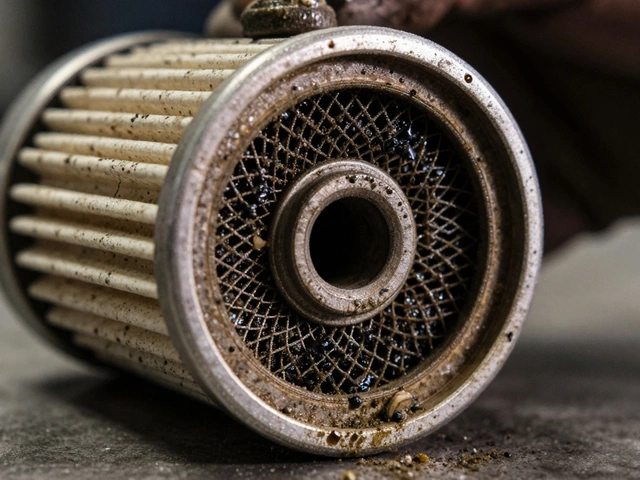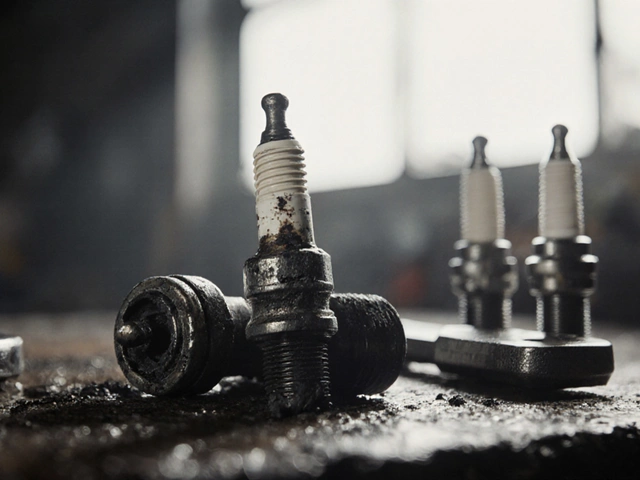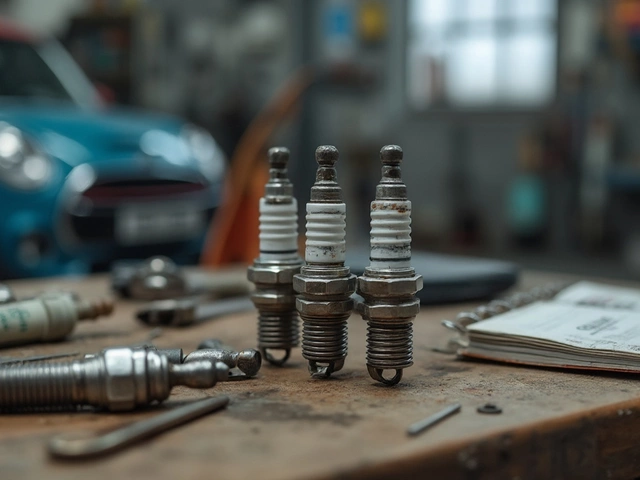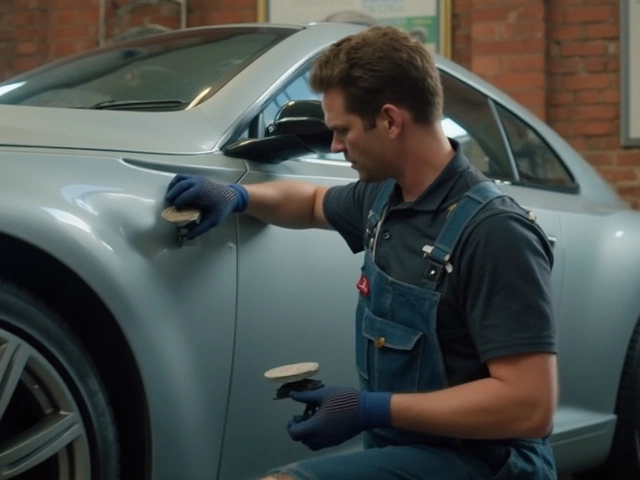The health of your car’s radiator is crucial. It's not just about preventing those pesky overheating issues during a summer drive but also ensuring your engine runs smoothly and efficiently. Knowing when it's time to upgrade can make all the difference.
But is it worth shelling out for a new radiator? This is a question many vehicle owners find themselves grappling with, especially as they weigh the costs against potential performance gains. Let’s take a closer look at the importance of your radiator and the benefits a new one can bring to your car's performance.
- Understanding Car Radiators
- Signs You Need a New Radiator
- Benefits of Installing a New Radiator
- Choosing the Right Radiator
- Installation Tips and Considerations
- Cost Analysis and Value
Understanding Car Radiators
Car radiators are pivotal to your vehicle's cooling system, acting as the backbone that ensures the engine stays at optimal temperatures. A radiator's primary function is to dissipate the heat generated by the engine. It does so by circulating coolant — a mixture of water and antifreeze — through the engine block. As this coolant travels through the hot engine, it absorbs heat, which is then transferred to the radiator, where it is expelled into the air. This process is vital because engine components run best under a specific range of temperatures, and excessive heat can lead to severe damage or total engine failure.
Radiators are made up of a large, flat block that contains a series of thin, fin-like channels or tubes. These tubes are designed to maximize surface area for efficient heat transfer. The coolant runs through these tubes while being cooled by airflow, facilitated by either the car's motion or a fan. The enhanced surface area ensures quick and effective cooling in all driving conditions, from stop-and-go traffic to long highway cruises.
The materials used in radiators have evolved significantly over time, with most modern radiators constructed from aluminum and plastic, which offer durability and efficient heat management. Aluminum's lightweight properties make it ideal for heat dissipation without adding significant weight to the vehicle. Before aluminum, many radiators were made from copper and brass, which, while effective, were heavier and more expensive. Modern radiators balance efficiency and cost with these newer materials.
"A well-functioning radiator is essential to prolong the life of your engine," notes James Martin, a leading automotive engineer. "It's like the heart of the engine cooling system, pumping coolant and regulating heat to prevent catastrophic failures."
Understanding when to replace or upgrade a radiator is crucial. Common signs that might indicate it's time for a new radiator include frequent overheating, leaking coolant, or visible damage to the radiator itself, such as corrosion or broken fins. Ignoring these signs can lead to diminished engine performance, reduced fuel efficiency, and, in dire cases, a blown gasket or complete engine replacement.
For car enthusiasts and everyday drivers alike, investing in a well-maintained radiator can lead to enhanced vehicle performance, ensuring engines last longer and perform better. As new technologies emerge, some of the latest radiators come equipped with advanced features such as integrated transmission coolers or performance-grade enhancements like high-flow designs, which can be particularly beneficial for high-performance or off-road vehicles.
Given the critical role radiators play, understanding and evaluating their condition and performance should be a regular part of vehicle maintenance. Whether you’re tackling daily commutes or adventurous road trips, a functional and efficient radiator is key to both vehicle longevity and driver peace of mind.
Signs You Need a New Radiator
Recognizing the moment when your car needs a new radiator is essential for maintaining your vehicle's health and longevity. If you often find your vehicle’s temperature gauge creeping toward the danger zone, it might be the first red flag that your radiator is failing. The cooling system should efficiently keep your car at optimal temperatures, preventing unnecessary wear on the engine. Overheating isn’t just a minor inconvenience; it can lead to significant damages that require costly repairs. Watch for consistent temperature spikes that may suggest your cooling system's heart is struggling.
Another telltale sign is the presence of coolant leaks. Radiators are made from aluminum and plastic components, which can crack over time due to exposure to heat and pressure cycles. When you start noticing pools of coolant under your car, it could be more than just a simple hose issue. Often, a closer inspection reveals cracks within the radiator itself. Leaking coolant decreases the system's efficiency, leading your engine to run hotter than it should. Properly checking for leaks before they escalate into major problems can prevent against expensive engine damage.
Unusual discoloration or sludge in the coolant can also indicate a radiator issue. Typically, coolant has a bright, vibrant color and should flow freely. If you find murky or rusty sludge in the expansion tank or radiator cap, it's a signal that the internal parts may be deteriorating or that there’s possible contamination. This contamination can clog up passages, restricting the flow of coolant and exacerbating overheating problems. It's not just a cleanliness issue; it's a performance one, directly affecting your engine performance.
A mysterious drop in coolant levels without visible leaks might also be worth investigating. This could suggest an internal failure within the radiator or the engine block itself. Regular checks and maintaining topped-up coolant levels are part of essential vehicle cooling system maintenance. However, when you notice levels dropping mysteriously, it's advisable to have it checked immediately. Ignoring such signs could lead to severe engine damage or a complete radiator failure at an inconvenient time.
Noises from the vicinity of the radiator are another giveaway. Whistling, gurgling, or clanking noises might indicate trapped air within the system or failing components. A functional radiator should perform its duties silently. Any unusual sounds indicate that you may need to take preventative measures before minor faults become significant concerns. Paying attention to odd noises can save you from a roadside breakdown or an overheated engine.
Finally, if your car is older or you've covered significant mileage, it's crucial to consider the typical lifespan of a car radiator, which often spans between eight to ten years. Over this time, wear and tear are inevitable. Routine inspections by a trusted mechanic are highly recommended, especially if you have experienced any of the above symptoms. Keeping track of your radiator's condition is a strategic way to ensure continued optimal performance and avoid more costly future repairs.
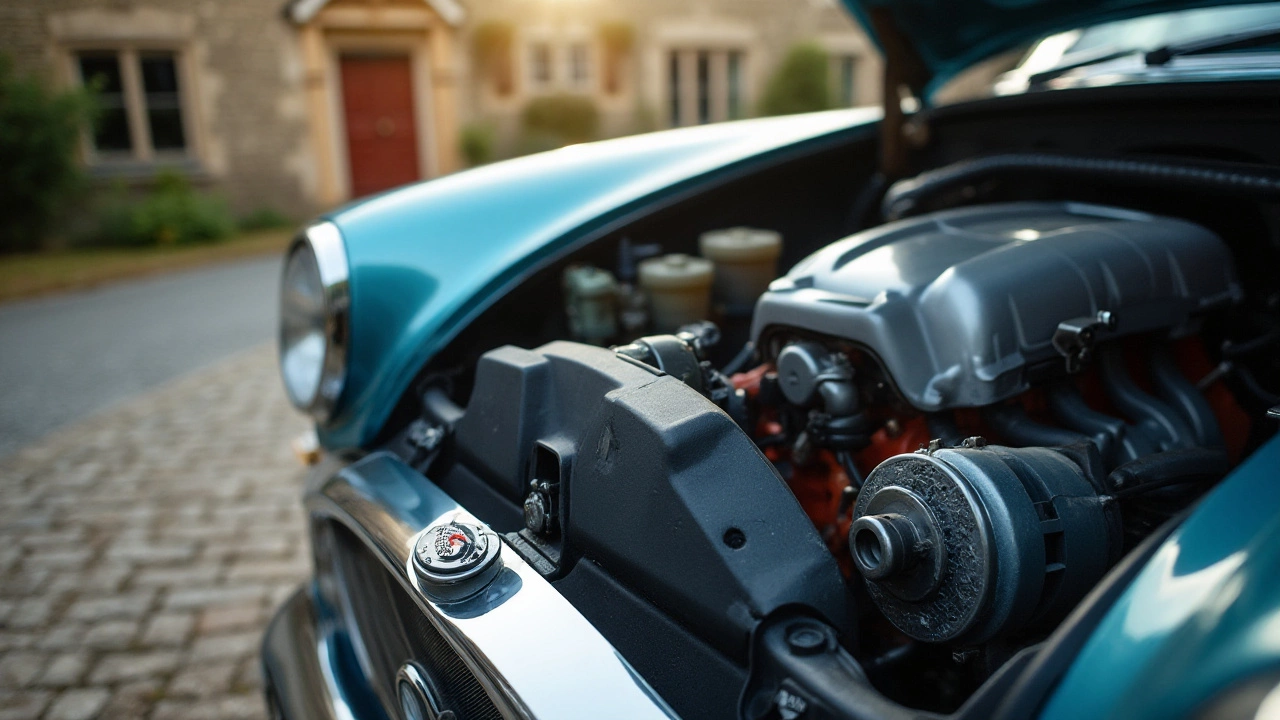
Benefits of Installing a New Radiator
When it comes to upgrading your car's cooling system, one major component to consider is the car radiator. A properly functioning radiator is often seen as the backbone of effective vehicle cooling, making its role crucial for maintaining engine performance and preventing potentially costly engine damage. New radiators often come with innovations in design and materials that can offer significant benefits over older or worn-out models.
One of the most immediate advantages of a new radiator is improved cooling efficiency. With technological advancements in radiator design, modern radiators often provide a more effective heat exchange process. This means your engine is less likely to overheat, reducing the stress on various components. This not only extends the life of your engine but also improves fuel efficiency, as engines running at optimal temperatures consume fuel more efficiently.
Another benefit is the potential for increased lifespan and durability. New radiators are typically made from materials that resist corrosion better than older models. By installing a radiator crafted from superior materials, the constant battle against rust and corrosion can be significantly reduced. This ensures that the cooling system remains free of leaks and coolant contamination problems for a longer period.
Modern radiators can also be lighter, helping to reduce the overall weight of the vehicle. This weight reduction can have a positive impact on fuel efficiency, as the engine doesn't have to work as hard to propel a lighter vehicle. While the primary purpose of the radiator remains cooling efficiency, these secondary benefits help justify the initial investment of a new radiator.
A well-functioning radiator is the unsung hero of your vehicle’s cooling system, ensuring smooth operations under the hood.” — Automotive Journal Review
Cost consideration is another important aspect to consider. Although purchasing and installing a new radiator involves an upfront cost, it often saves you money in the long run by preventing frequent overheating issues. This preempts possible engine repairs that can become hefty on your wallet. Additionally, many modern radiators come with warranties, offering peace of mind against manufacturing defects.
Equipping your car with a new, efficient radiator can lead to lower emissions. Efficiency in engine temperature regulation helps engines burn fuel more completely, thus reducing emissions. For the environmentally conscious driver, this can be a significant factor to consider when pondering the long-term benefits of a radiator upgrade.
Choosing the Right Radiator
Deciding on the perfect radiator for your car can feel overwhelming, but it doesn't have to be. When picking a new radiator, start by considering the specifics of your vehicle's engine performance needs and climate conditions you typically encounter. Different vehicles require different types of radiators, from aluminum to copper-brass, each offering distinct advantages. Aluminum radiators are lighter, making them a solid choice for high-performance cars, while copper-brass radiators are known for their superior heat exchange capability, making them an excellent option for heavy-duty use.
The next step is to think about the size and fitment of the radiator. It's crucial to ensure the new radiator matches the original dimensions to avoid installation hassles. Many drivers overlook this, leading to complications during installation. Measure the old radiator carefully and compare it with your potential replacement. Additionally, consider the capacity and how well the radiator will dissipate heat under your vehicle’s typical operating conditions. Sometimes, a larger radiator with more rows and thicker cores can deliver better cooling efficiency, which is vital in maintaining optimal vehicle cooling.
Understand your specific requirements. If you use your vehicle for towing or if you're often driving in hot climates, it might pay off to upgrade to a more robust radiator. Many car enthusiasts turn to aftermarket solutions, which are often designed with increased cooling performance in mind. As the aftermarket is rich in options, it's essential to choose a reliable brand, renowned for quality and longevity. Radiator upgrade kits can sometimes include additional components like improved fans or coolants that complement the new installation perfectly.
Automotive expert Rory Egan notes, "An efficient radiator not only keeps your temperature in check but assists the entire cooling system in protecting your engine against severe damage."As Mr. Egan highlights, the right radiator should not be viewed merely as a replacement part but an integral component that safeguards your engine. Such an investment pays off by prolonging engine life and enhancing your driving experience.
Adjusting your expectations based on budget and necessity acts as another pivot in your decision. While cost is a factor, don’t let it be the sole decider. Shop around for the best deals and check reviews or forums where fellow drivers share their own experiences. There are cases where a premium radiator you'll buy today saves a substantial amount in future repair costs. Remember, investing wisely in your radiator today reaps dividends in enduring car radiators performance tomorrow.

Installation Tips and Considerations
Installing a new car radiator is a task that can seem daunting, but with careful preparation and attention to detail, it can be accomplished effectively. The first step is to ensure that you have the right tools on hand. This usually includes a socket set, screwdrivers, pliers, and a coolant catch pan. Safety is always a priority; make sure your vehicle is on a flat surface and the engine is cool before beginning. It’s also a good idea to disconnect the battery to avoid any electrical mishaps during installation.
One critical consideration is the proper disposal of old coolant, which is toxic and should be disposed of according to local regulations. Often, auto parts stores offer recycling services for this purpose. When removing the old radiator, take note of how it’s installed—photographs can be incredibly useful here as a reference when you install the new unit. Make sure to label or organize any screws and small parts for easy reassembly.
When placing the new radiator, it’s vital to ensure all connections are secure and the components are aligned. Pay close attention to the hoses and clamps; these should be inspected for wear and replaced if necessary. Refill with the appropriate coolant mixture as specified by the vehicle’s manufacturer, ensuring there are no air pockets in the system. Bleeding the coolant system might require running the engine with the heater on until the thermostat opens, allowing the coolant to circulate fully.
According to a statement by John Lopez, an automotive expert at CarTech Magazine, "A well-installed radiator not only improves engine performance but also enhances fuel efficiency and prolongs the life of your vehicle."Routine inspection after installation is a smart move. After several drives, check for leaks or any signs of overheating. If all is well, the vehicle should exhibit smoother engine temperatures and consistent performance. For those apprehensive about performing the installation, a professional automotive technician can ensure the job is done correctly, often within a few hours.
If you've never installed a radiator before, considering a professional's help can be reassuring. Yet, undertaking the task yourself is a rewarding experience. Not only do you get to know your vehicle inside and out, but you also save a significant amount of labor costs. Just remember, whatever path you choose, the goal is a reliable vehicle ready for any journey ahead.
Cost Analysis and Value
Deciding whether to invest in a new car radiator involves weighing the costs against the potential benefits and value it brings to your vehicle. Many car owners find themselves at a crossroad when faced with the decision to replace their radiator. This section will scrutinize the financial aspects and delve into whether the upgrade is genuinely worth it, aiming to provide a clear picture of both short-term expenditures and long-term savings.
The initial cost of a new radiator can vary widely, depending on the make and model of your vehicle. Basic radiators for common models might cost only a few hundred dollars, while more specialized or higher-performance versions could reach into the thousands. It's crucial to consider not just the purchase price but also the labor costs involved in installation. For those who aren't mechanically inclined, professional installation can add a significant fee to the overall expense. However, installing a new radiator can often be seen as an investment rather than a simple expense. This is where the engine performance comes into focus, offering potential benefits that may outweigh initial cost.
Increased vehicle cooling efficiency can lead to better fuel economy, particularly in older vehicles where the cooling system may not perform optimally. By effectively regulating the engine's temperature, a new radiator reduces the risk of overheating, which can be catastrophic for an engine, leading to extensive repairs that could far surpass the cost of a new radiator itself. This preventive measure helps maintain the engine’s integrity, extending its lifespan and ensuring it runs smoothly for many years. Furthermore, there are often hidden savings: reduced risk of roadside breakdowns, less wear and tear on the engine, and maintaining a higher resale value for the vehicle.
Interestingly, a recent survey conducted by an automotive group revealed that 60% of drivers experiencing frequent overheating issues found a noticeable improvement in their car’s performance after replacing the radiator. With this statistic in mind, it becomes evident that while the outlay might seem hefty, the potential for increased reliability and reduced downtime can make it a worthy investment for many drivers.
"Investing in a new radiator, especially in climates where extreme temperatures are a norm, can be seen as buying reliability and peace of mind," noted a report by a well-respected automotive magazine.
When evaluating whether it's worth upgrading, consider the car's age and value. For newer models or those still under warranty, replacing the radiator can preserve value and ensure the vehicle’s longevity. On the other hand, in older cars nearing the end of their life expectancy, the decision becomes more about a balance between current necessity and the likely improvement in daily reliability.
Finally, remember that your approach should include both present needs and future plans for the vehicle. Does your car often undertake long journeys where a cooling failure could leave you stranded? Or do you live in a region with extreme temperatures that put a constant strain on your vehicle’s cooling system? If yes, then a new radiator becomes not just an upgrade, but an essential component for secure and efficient travel. By holistically analyzing these aspects, you ensure the investment aligns with your automotive needs and lifestyle.


